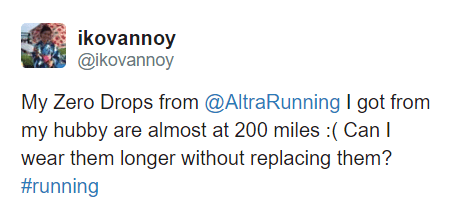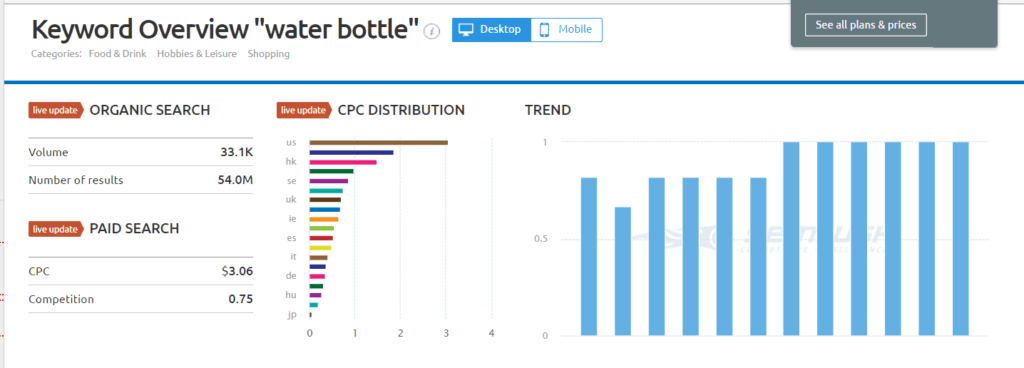
7 Steps to Finding the Best Evergreen Content Ideas
Evergreen content ideas can help support your user experience and ensure your site converts and generates the revenue you expect.
Highly converting evergreen content ideas can be a powerful way to draw new customers. The more timeless your content is, the longer you can provide value to your customers and ultimately, your brand.
Flavor-of-the-week articles that pull from current trends can help drive search results for a while, but evergreen content can continue to support your user experience for the long term.
What if you could not only identify the topics your consumers want to know more about but come at those topics from a unique angle?
Sounds like a dream?
It’s not. Here’s how to do it.
First off, though, I want to give a shout-out to the content writer who passed this technique on to me. When you need the services of a writer who knows his stuff, give Don Sturgill a call.
I’ll summarize each of the seven steps, then illustrate them with an example.
1. Aim Your Evergreen Content Ideas at a Particular Audience for a Particular Purpose
A magnifying glass can start a fire when the light beam is focused correctly. Scattered light is fine for illumination, but you’re not going to start any fires with it.
Marketing necessarily begins with the customer in mind. The job of content marketing is not to attract many people, but to attract the right people.
The point where your expertise intersects with the needs and desires of your customers is the marketing sweet spot for your goods and services.
Know your audience and your primary objective before you begin. How will the content be used? What do you want it to do? What do you want the reader to do, think, or feel?
The more deliberate your team is at producing targeted content, the more effective that content will be, and the better able you’ll be to measure the results.
The more deliberate your team is at producing targeted content, the more effective that content will be. Share on XEXAMPLE: I need an evergreen content idea for our blog. I want readers to feel that they can trust the brand for accurate and helpful information on topics related to the goods it sells.
Let’s say my company sells walking, hiking, and jogging equipment. Our audience is interested in health, nature, and fresh air. We offer higher-end goods that appeal to those who appreciate quality. We’ll continue to build on this example in the next six steps.
2. What Does Your Audience Want to Know?
People turn to the internet to find answers to questions on their path to purchase. What product-related questions do your customers ask over and over again? What problems do they face daily? How can your products or services help them accomplish their goals?
These questions are the gold standard for helpful, evergreen content. When your content provides answers to questions your audience asks consistently, you become known as a go-to place for people interested in your niche.
But how do you find out what your customers want to know?
Here are some suggestions. In your research, pay particular attention to the specific words your audience uses to describe their interests.
- Listen internally. Most companies are already sitting on the mother lode of evergreen content ideas, but it’s probably disguised as “customer service.” Sit in, or listen in, on service calls. Ask your staff which questions they hear constantly. Pull questions from emails and comments that come in from all touchpoints with the customer.
- Listen to competitors. Scour your competitors’ websites for remarks from customers. Read blog comments. Note their FAQ’s. Search for competitor reviews online to see what people like and don’t like about their companies and products.
- Use the search engines on sites like Amazon and YouTube to find topics related to your niche. Go through the comments there, looking for questions and struggles you can help solve. There’s nothing wrong with jumping in and pointing the way. Comment streams can be a powerful place of customer engagement.
- Find out which social media sites your customers like and go there to listen. Join the conversation, but don’t blast out sales messages. Be helpful. Stay alert. Always be on the lookout for evergreen content ideas.
Tools to help: Much of this research can be accomplished by browsing and listening. The following tools, though, can supercharge the process.
- BuzzSumo will show you the most-shared content for a given topic. That gives you a feel for who is publishing what, how it’s performing, and the angles the articles take.
- Social Mention aggregates social data. You can search to see who is talking about your company, a competitor, or a topic. Returns include source, top users, top keywords, and sentiment.
- Hashtagify is a Twitter hashtags search tool that provides related hashtags to your topic, top influencers for the topic, and current trends.
Do you think a company in the running shoe business would have a response to a tweet like the one shown below? Remember, the goal in social engagement is to be useful, not to push your products.

EXAMPLE: My consumer research turned up a treasure chest of questions. Customers want to know how to keep from getting blisters, how to select the best running shoes, where to find new trails to explore, where to find a fishing pole that will collapse for hiking, how to train for a marathon, which water bottles are safest, and more.
Many of the questions are about the same thing, but are phrased differently. I categorize them for a visual look at which topics are most popular with my brand’s audience.
3. Choose a Topic or Question to Research
Once you’ve covered the first three steps, you’ll end up with a sizeable list of the questions, problems, and topics your customers care about most. Choose one broad topic to begin, using any criteria you deem important. This is a good time to check your editorial calendar for upcoming needs.
EXAMPLE: It’s springtime and I see plenty of questions about water bottles. People want to know how to clean them, which material is best, how to carry one when jogging, and more. We carry water bottles, but they aren’t a top revenue source. I wonder whether there is an angle we can use to draw more interest to our bottles and get more sales.
Even though my primary aim is to build our site as a niche authority, I know that those who come to read an article about water bottles are quite likely to be interested in purchasing one – whether now or later.
4. Determine Long-tail Keyword Phrases for the Topic
Your research has probably given you several potential angles. You may be tempted to go with one of them and not search any further. That limits your ability to find highly converting evergreen content ideas, though. There could be a gem lurking just under the surface. It’s easy to get hung up for hours doing keyword research, but you don’t have to. I’m going to show you how to cut to the chase.
Tools to help: This part of the job will be much quicker and easier with a good tool. Here are two suggestions. There are more possibilities, but these serve me quite well. The important thing is that you choose a tool you like and that you learn how to use it effectively.
- Keyword Researcher Pro is inexpensive and powerful. It’s simple to use and always turns up surprising phrases I hadn’t thought of.
- Market Samurai is a complete keyword analysis package. The learning curve is fairly steep, but the depth of information you can mine with this tool makes the effort well worth the time.
EXAMPLE: I plug “water bottle” into Keyword Researcher Pro in a couple of ways: [* water bottle] and [how to * a water bottle]. Out of the 414 returns, I choose 53 that show real potential.
5. Determine Search Traffic for Each of the Keyword Phrases
If you had used Market Samurai for the long-tail research, you could have looked at search traffic from within the same tool. Keyword Researcher Pro doesn’t show those numbers. You need to copy the phrases you want to check and plug them into Google’s Keyword Planner.
It’s a simple task. Ideally, some of the phrases will show a decent level of search activity. Don’t look at the numbers Google shows you as terribly accurate. Instead, you use them as a way to consider the comparative search demand for each of the phrases.
To get the best results, choose the “Get search volume data and trends” function, then sort the results by average monthly searches.
Tools to help: Other than Market Samurai, another tool I like is SEMrush. It’s a premium tool, but it provides more SEO information than keyword data only. Whereas Market Samurai is a one-time pay, SEMrush is a monthly subscription. You can get trials of both to see which fits your needs best. Here’s a look (below) at the SEMrush dashboard.

EXAMPLE: I see plenty of potential for my search on “water bottle.” I pick my top five for the first round of deeper investigation. Here are the terms I’ve chosen:
- Stainless steel water bottle
- Best insulated water bottle
- Filter water bottle
- Pink water bottle
- Running water bottle
6. Find Out How Much Competition There is for Each Phrase
Content Samurai has a function that allows you to get a feel for competition. Keyword Planner does too, but it’s general and specific to ad bidding.
My favorite way to do a deep dive here is to use the “allintitle” search parameter. To do that, I would enter [allintitle: “stainless steel water bottle”] into the search box for my first phrase.
EXAMPLE: This can be tedious work, but it can also be quite rewarding. I keep a simple chart of my research. I list the keyword, the supply (from my allintitle search) and the demand (from my Keyword Planner traffic search). I then divide demand by supply. If that number is 0.5 or more, I get excited. If it is over 1, I get really excited.
The larger that ratio is, the more opportunity there is to grab front page of the search results for that term. You can refer to my example chart in the screenshot below.

7. Consider the Results and Make Your Choice
I like to stop and refer back to step one here to make sure I’m looking at the data from a “what would my customers want most” perspective. You’ll want to rely on your experience with the brand and consider which topics are most needed. It may be that this round of research has generated enough ideas to last a month or more. I often find that to be the case.
EXAMPLE: My water bottle research uncovered what could be an excellent opportunity. The “best insulated water bottle” term is way open for content, there is five times more demand than supply for that phrase.
But there’s another I find more intriguing. Further down the list of the 53 terms I plugged into Keyword Planner, I see several more references to running with a water bottle. I also noticed considerable buzz about how to pack a water bottle with you while jogging in my work for step two above (What does the audience want to know?). Plenty of people are interested in how to carry a water bottle while running.
That not only flags this as a prime topic for an article or page on my website, but it makes me wonder whether there is opportunity to design or offer a water bottle holder strap for runners.
One of the phrases that turned up in my keyword research was “How to run with a water bottle.” I plug that into an allintitle search and just about fall out of my chair. Here’s what Google returned (screenshot below).

There’s not a single relevant article indexed in Google with that phrase in the title. (Though I’ve a feeling there will be after this article is published.)
That’s something that almost never happens. It’s a true golden egg. When I enter that in my supply/demand chart, it returns an error for the ratio. Division by zero isn’t permitted!
Finding Highly Converting Content Ideas – Conclusion
Finding highly converting evergreen content ideas isn’t terribly difficult. All you need is these seven steps, a few good tools, and a desire to get better at finding niches within your niche.
Here at The Good, we sometimes work with clients who are trying to produce content that has way more supply than customer demand. By using the method outlined here, you can reverse that strategy and look for long-tail keywords that are begging for highly converting content.
Wouldn’t you rather go fishing in an area where there are few other fishermen and an abundance of trout, than to go where you have to take your own rock to stand on and the fish are few?
I thought so.
To get your free Stuck Score™ and find out how to unblock the barriers keeping you from e-commerce success, all you need to do is ask: Get unstuck.

About the Author
David Hoos
David Hoos is the former Director of Marketing at The Good and a trusted advisor to marketing experts.